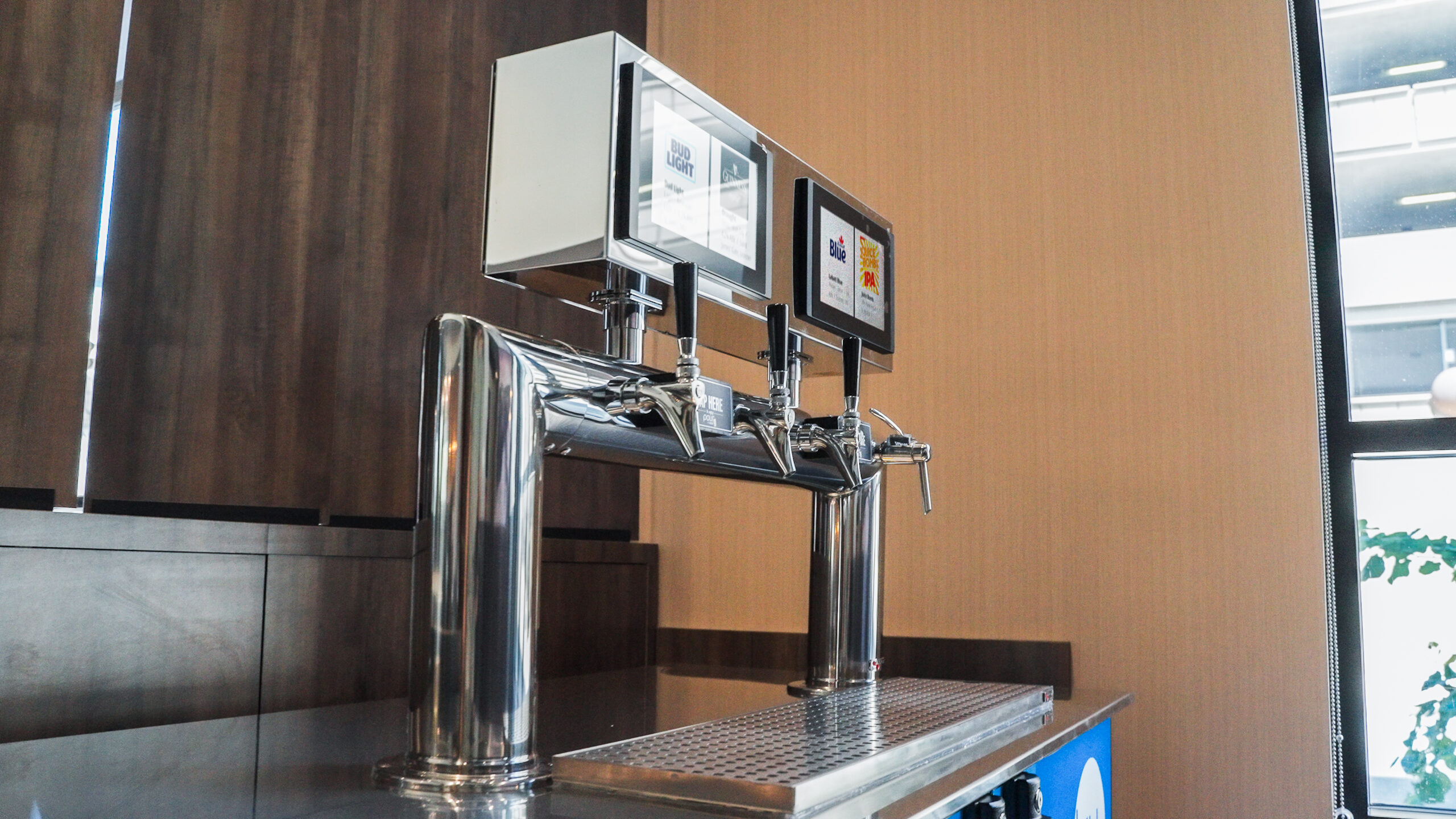Seabrook Island Club Generates 700+ Users at Self-Pour Systems in First 3 Months
Seabrook Island Club Generates 700+ Users at Self-Pour Systems in First 3 Months
As going out with family and friends and consuming alcohol remains a popular social activity, managing the risks associated with it, particularly overconsumption and underage drinking, continues to be a crucial concern for businesses in the hospitality industry. In the United States, the legal drinking age is 21, and every state abides by that standard, but alcohol remains the most widely used substance among America’s youth. According to the CDC, 5.9 million people aged 12 to 20 reported drinking alcohol beyond “just a few sips” in the past month.
To manage these risks, businesses in the hospitality industry are subject to Dram Shop Laws that hold them accountable for serving alcohol to minors or visibly intoxicated individuals. While liability laws vary from state to state, establishments serving alcohol are considered liable for their patrons’ behavior and can have their liquor licenses revoked or suspended. Most businesses have liability insurance to protect them in these instances.
One way to effectively manage alcohol-related risks is through the use of self-pour technology. Despite a common misconception that self-pour technology promotes overconsumption and underage drinking by eliminating staff interaction, it has processes and systems in place to allow businesses to properly and efficiently manage these risks while maintaining an enjoyable experience.
Self-Pour Technology and Its Advantages
Self-Pour Technology and Its Advantages
Self-pour beverage technology allows customers to pour their own drinks, providing a more interactive and enjoyable experience. PourMyBeer’s self-pour system uses RFID (Radio-Frequency Identification) technology to track every ounce poured. This allows customers to pay and pour by the ounce while operators can set specific serving limits to reduce the risk of overconsumption and maintain a safer, more controlled drinking environment. Additionally, self-pour technology reduces lines and wait times, providing a more efficient experience for customers.
The self-pour process is simple!
-
Effortless setup and maintenance.
-
Empower your business strategies with actionable insights, helping you stay ahead of the curve.
-
Make data-driven decisions to grow your business.
-
Optimize marketing strategies and promotional offers based on insightful reports.
How to Manage Underage Drinking
How to Manage Underage Drinking
Preventing underage drinking is a critical concern for businesses in the hospitality industry. With PourMyBeer’s self-pour technology, establishments can take several measures to ensure compliance with local and state laws and prevent minors from pouring and drinking alcohol.
One of the essential steps in preventing underage drinking with a self-pour system is age verification and ID checks. PourMyBeer’s self-pour system requires customers to present their ID at the time of check-in to obtain an RFID card or wristband linked to their credit card before they can start pouring. To properly check IDs and ensure each guest is using a real ID, staff members can scan guests’ IDs at PourMyBeer’s check-in terminal. Once a staff member verifies their age, they can begin pouring and enjoying the self-pour fun!
Popular Now

- Hotel
Hampton Inn Boston Achieves Profitability in 3 Months with Self-Pour Station

- Brewery
Bunnyman Brewing Increases Customer Repour Rate by 20% with Self-Pour Beverage Wall
These statistics demonstrate the benefits and real-world impact of implementing PourMyBeer's self-pour technology.<span data-metadata="">
Join the ranks of thriving businesses and unlock your establishment's potential!
How to Prevent Overconsumption with Self-Pour
How to Prevent Overconsumption with Self-Pour
Setting Serving Sizes
Setting Serving Sizes
One of the advantages of using self-pour technology is that establishments can set serving sizes for their drinks, which can help prevent overconsumption. PourMyBeer’s system, for instance, limits guests to only pouring two servings on their RFID card. Operators can adjust the serving size for each beverage on tap depending on the alcohol by volume for beer, wine, cocktails, cold brew, kombucha, or another beverage. Typically, a serving of wine is 5-7 ounces, and 10-16 ounces for beer.
When customers reach their two-serving limit, they need to get their RFID card or wristband reauthorized by a staff member to access two more servings. This staff interaction allows establishments to ensure that customers are consuming alcohol in moderation while also giving them the freedom to control their drinking experience.
Monitoring Consumption with Data Tracking and Real-Time Reporting
Monitoring Consumption with Data Tracking and Real-Time Reporting
When a customer reaches their drink limit, a message will appear on the screen from which they are trying to serve themselves, indicating that they need a staff member to reauthorize their RFID card or wristband. Reauthorizing the card is a simple task for staff that takes only two clicks. Staff members can also use this opportunity to engage with the customer and assess their level of intoxication.
Success stories
Success stories

- Hotel
Hampton Inn Boston Achieves Profitability in 3 Months with Self-Pour Station

- Brewery
Bunnyman Brewing Increases Customer Repour Rate by 20% with Self-Pour Beverage Wall

- Restaurant